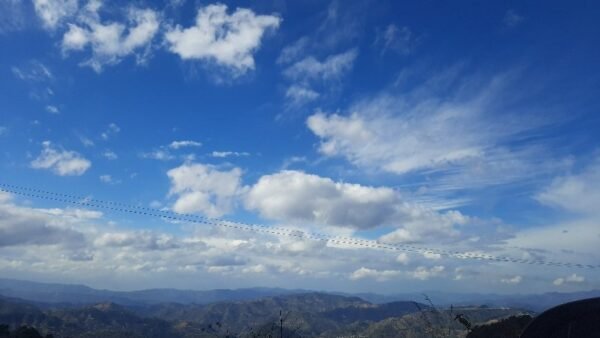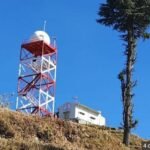Shimla, July 7
Eco friendly group Himdhara Pariyavarn Samuh recently boycotted the stakeholders’ consultation held by the World Bank and the state Directorate of Energy. The group blamed the two for undermining people’s concern by indulging in indiscriminate construction of mega power projects wreaking havoc and fatality to the Himalayan fragile ecology.
In a statement issued by the convenor of Himdhara, Pariyavarn Samuh said that on July 5, many Environment groups, Including Himdhara, were invited to attend the co-opted Stakeholders’ Consultation, but they rejected the invitation.
Mansi Asher of the group said that a team from World Bank was in the state to show its cooperation in making Himachal the first ‘Green State’ of India. She said that though it appears to be alluring on the part of the state and WB, its real motive was to give and take a loan worth Rs1500 crore rupees.
She blamed that after the last two years of Environmental disasters in Kinnaur, like stone shooting stones and Landslides, which claimed many lives, the State government is trying to show a much human face by holding such events.
Ashar said that the World Bank’s project proposal indicates that the state is continuing to construct large-scale hydroelectric projects, which the WB has only praised.
She said that the environmental and social impacts of so called green energy policy are not mentioned in the World Bank documents. She stated that their has been a competition to promote hydropower development in the Himalayan regions in the name of clean and renewable energy has been going on for the last two decades. Alleging that these hydel projects and associated tower lines have been built on a large scale in Himachal, and for it, thousands of hectares of forest land and trees have been razed, further exploiting valuable agricultural land too.
These dams have caused landslides and soil erosion and massively affected the river’s ecosystem. Besides, the most dangerous thing is that where there is a significant flood or landslide, such projects become a blockade in the path of the raging river, thus increasing the intensity manifold – as has been seen in the tragedies of Uttarakhand – Kedarnath and Rishiganga.
After the 2013 Uttarakhand tragedy, the Ravi Chopra Committee and Scientific Assessment clarified the role of hydropower and indiscriminate construction in promoting the effects of the Kedarnath flash flood. But nothing was learnt from it.
The National Disaster Management Authority also clarified its stand in a report that these projects are unsuitable for high Himalayan regions, and other energy options would have to be found.
But still, World Bank and other such institutions are celebrating the achievement of 11000 MW of state generation of hydel energy by ignoring the fact that, too, is, achieved at the cost of invaluable nature and thousands of lives. She said that even after being built, they keep wreaking frequent accidents and disasters caused by anthropogenic reasons. Further, the group convenor displayed concern that most of the upcoming Himachal projects are still proposed in climatically vulnerable and ecologically fragile areas.
Citing Abhay Shukla Committee, presented in the HP High Court, had suggested a blanket ban or stay on new hydroelectric projects in the state until an independent inquiry into the hydroelectric policy was conducted. But the state government completely denied the report.
Adding to the perils, she said that non-compliance with environmental regulations and non-implementation of social accountability laws are common after projects are approved. She stated that there is no security monitoring of any kind, constantly putting the lives of workers and people in the affected villages at risk.
The diminishing space for democratic people’s participation in decision-making has worsened the situation over the years. She informed the EIA 2020, MoEF&CC, and the government are moving towards eliminating people’s involvement.
At the same time, the Forest Rights Act and the Land Rights Act, which make NOC mandatory for the affected Gram Sabhas, are also being disregarded, and the way is being cleared for the projects by amending the rules of forest transfer.
Due to this, the tribal communities of Kinnaur and Spiti in the Himalayan region, located in Chandrabhaga, have protested too, she stressed.
These are geologically unstable areas that are vulnerable to earthquakes and avalanches. But in the government’s Golden Jubilee Energy Policy 2021, far from banning the setting up of power projects in these areas, the talk was on making the approval mechanism simple and easy, informs Asher.
The affected communities and environmental organizations have continuously conveyed through memorandums to various government agencies about the absence of accountability and grievance redressal mechanism related to dams in Himachal and the lack of punitive action, but to date, no concrete hearing has taken place
.” If the World Bank is serious about the environmental and social impacts of projects like hydropower, then first of all, what steps have been taken by the government to solve the issues of the people should be investigated openly and autonomously. Without knowing the side of the public, how can the World Bank get involved in the campaign to make Himachal a green state?
She said that eventually, the Rampur Nathpa Jakhari project, etc., was set up with the financial help of institutions like the World Bank, and thus such institutions have a moral responsibility.
Surprisingly, a two-and-a-half-hour meeting was considered sufficient for consultation with the participants. In contrast, the government had to openly invite communities affected by energy projects to this meeting to give time to talk . Not only should their side be heard, but in the interest of fairness and the environment, she added that effective steps should also be taken by making changes in energy policy for the future.
Empower Independent Journalism – Join Us Today!
Dear Reader,
We’re committed to unbiased, in-depth journalism that uncovers truth and gives voice to the unheard. To sustain our mission, we need your help. Your contribution, no matter the size, fuels our research, reporting, and impact.
Stand with us in preserving independent journalism’s integrity and transparency. Support free press, diverse perspectives, and informed democracy.
Click [here] to join and be part of this vital endeavour.
Thank you for valuing independent journalism.
Warmly,
Vishal Sarin, Editor





